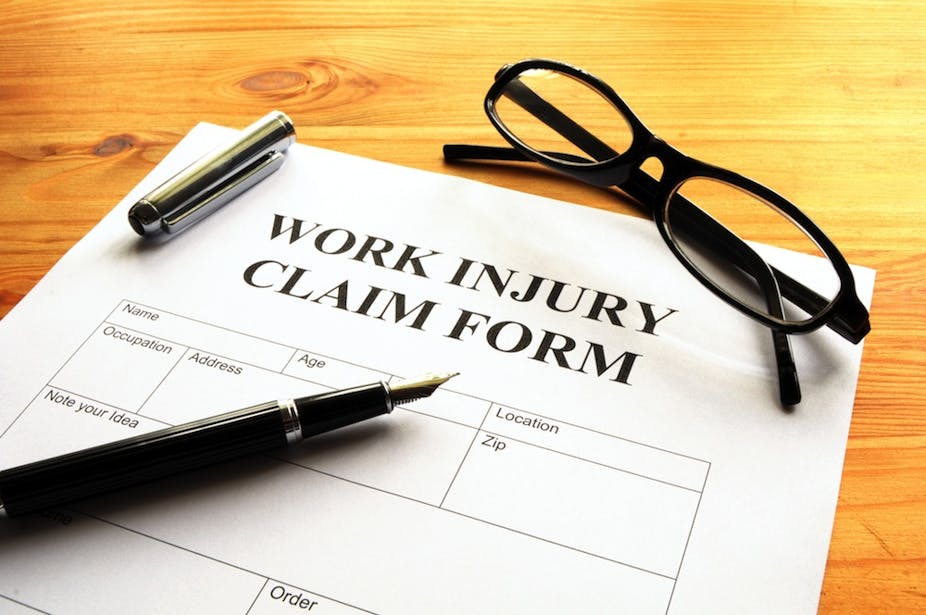A recently released report by SafeWork Australia shows that there has been no improvement in our national return-to-work rates for the past 15 years.
Despite substantial growth in the international body of evidence about what works and what doesn’t in returning injured people to work, as a nation Australia is no better at this in 2013 than we were 15 years ago. Our practises are broadly the same. Our policies have not really changed. We have failed to innovate.
The report summarises the headline findings of a survey of injured and ill workers conducted every year by SafeWork Australia, the federal government agency with oversight of our workers compensation systems. The survey includes workers who were injured in the previous seven to nine months, and asks two key questions. First: have you worked at any time since your injury or illness? Second: are you currently working in a paid job?
Beginning in the 1997-1998 financial year, the survey has found that yearly, between 84% and 87% of people surveyed report that they have worked at some time since their injury. In 14 of those 15 years, between 72% and 77% of people reported that they were working at the time they were surveyed.
In other words, about a quarter of injured Australian workers are not working 7 to 9 months after their injury.
Over the same period there have been major improvements in workplace health and safety, with a 26% reduction in the incidence of serious workplace injury in the decade to 2010. Much of this has been driven by innovation in work health and safety policy and practice.
So while we have become much better at preventing workplace injury, we are no better at helping people back to work if they are injured.
This is a major economic and public health challenge that is worth careful consideration by government and industry. The figures may surprise many.
In Victoria alone, workplace injury and illnesses covered by the state workers compensation agency resulted in 189,000 years of lost working time between 1995 and 2008.
In other words, for every year in Victoria between 1995 and 2008 we lost approximately 13,500 years of productive working time due to workplace injury and disease. Even a small improvement in return-to-work will have major implications for the economy, industry productivity and the financial sustainability of the workers compensation system.
The health benefits of safe work are now well documented. We know that being out of work is bad for a worker’s health. We also now know that returning to work aids injury recovery, improves social and community inclusion, and has positive economic impact.
Of course it is possible that we are so good at return-to-work that there is little room for improvement. But the evidence would suggest otherwise.
There are differences between states. Last year, Western Australia, New South Wales and Comcare (the federal government workers’ compensation scheme) were the best performers with 80% of injured workers back at work when they were surveyed. In South Australia the figure was 70%. In Queensland 75%.
This variation suggests that there is at least some room for improvement, particularly in the states with the poorest results in the SafeWork survey. This would lift the national average.
Following a string of recent poor results in the SafeWork survey, WorkSafe Victoria has elevated return-to-work in its list of priorities in its recently released five year strategy.
Similarly, Minister Bill Shorten recently announced plans to make Comcare, one of the better performing compensation schemes in this year’s survey, a best practice model for workplace rehabilitation and return-to-work.
There is also abundant research evidence, mainly from North America and Europe, showing that it is possible to improve return-to-work outcomes, including evidence-based guidelines for employers on the important principles of successfully bringing injured people back to work.
The research suggests that evidence-informed approaches can and do work; but this takes careful planning and sustained effort on behalf of those involved.
Such approaches are lacking in Australia. To my knowledge, there have been only a few small studies of return-to-work interventions amongst injured workers in this country in the 15 year period of the SafeWork Australia survey. So even if we are trialling new approaches, we are not evaluating them or reporting on the outcomes.
To make positive and sustainable changes, we need a greater emphasis in this important public health and social policy arena.
The Institute for Safety Compensation and Research (ISCRR) at Monash University has established a major research program and are planning some large return-to-work trials – the first of their kind in this country.
This presents an opportunity to change the Australian return-to-work model. To innovate.
For the health of our injured workers, the productivity of industry, and the viability of our workers compensation systems, I hope we take it.

